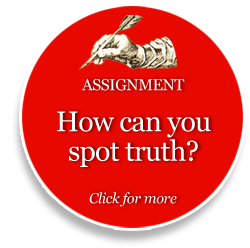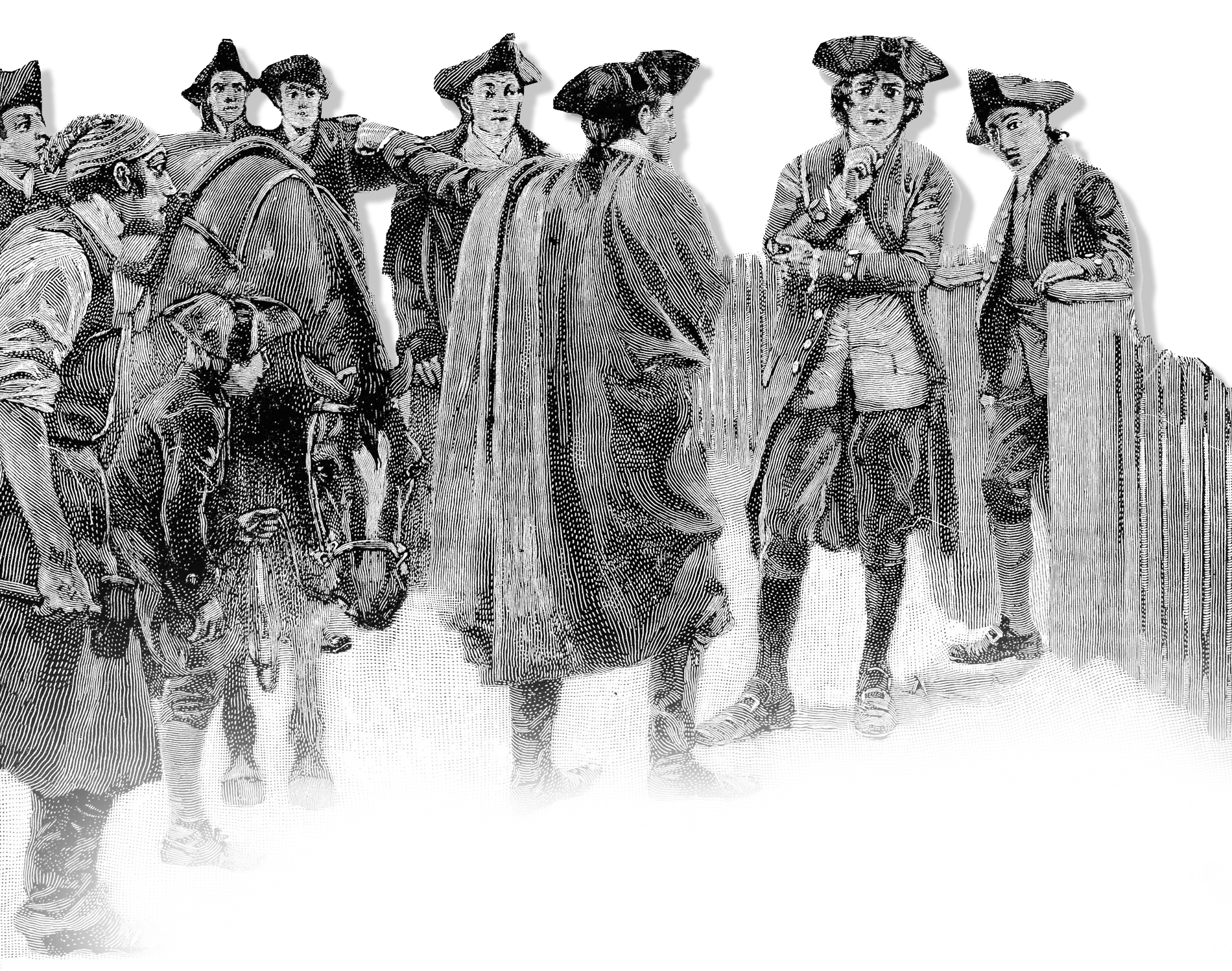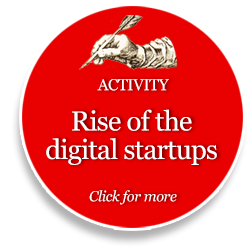Skills for digital adventurers
Here’s a message to students. You still need old-school knowledge. You need to express yourselves clearly. You need to know how to mine the world for facts. But you now need more. Can you speak “tech”? Do you have any business skills? Can you work collaboratively in teams? Are you comfortable with continuous change? Do you understand why some stories make a difference and others don’t? In the end, you’ll need to be able to tell stories, to develop content that not only informs communities but engages them.
 If you can learn journalism plus the rest, you can get a great job. If you don’t like the jobs out there, go out and create one of your own. This, of course, is what terrifies us parents. What do you mean that my child must learn to create the businesses of tomorrow? What about the bills of today?
If you can learn journalism plus the rest, you can get a great job. If you don’t like the jobs out there, go out and create one of your own. This, of course, is what terrifies us parents. What do you mean that my child must learn to create the businesses of tomorrow? What about the bills of today?
When parents look at the news, no doubt they focus on the roughly 20,000 journalism jobs lost during the recession and only a few thousand added back since then. But consider this: the jobs being lost are traditional journalism jobs, countless new media jobs are being created — and that will go on into the future. What we have in news was a classic double whammy — a recession on top of a transformational trend toward digital media.
As difficult as it is for institutions to get their collective heads around the size and pace of change, they need to. As my boss, Knight Foundation president Alberto Ibargüen, puts it: “Constant change is the new normal.”
One chart in particular sticks in my mind. It shows the household penetration of the printed daily newspapers in the United States. Just after WWII, there were more than 1.2 newspapers for every household in the U.S. There were both morning papers and afternoon papers — and many families took more than one. Today, the penetration rate is less than .4 papers per household. Today, a family at home subscribes, on average, to less than half a paper. On Mondays and Tuesdays those papers are so thin you actually are getting half of the paper you would have received a generation ago.
The chart shows the decline in an almost straight line, with the same downward slope, for 70 years.
Does that mean no one wants the news and ads that newspapers bring? Not at all. Consumption of digital news is soaring. Demand is fine. What’s dying is the way we provide and pay for the supply. Just look at the delivery process: First, you kill a tree to make paper. You get a huge press and tons of ink and print a paper full of yesterday’s news. You stack the printed papers into bundles, throw them into trucks, haul them around and toss them out. Then other people pick them up, load them into cars, unbundle them and fling them toward a porch. Sometimes the papers make it to the porch.
I love printed newspapers, the smell and the feel of them. But the truth is the energy-eating, time-consuming industrial newspaper process takes so long, by the time the thing finally gets to your door, the news can be as dead as the trees it was printed on. Someone tweeted it yesterday.
Scholar and journalist Phil Meyer, the father of Precision Journalism, extended the line in the graph showing fewer households getting papers. He estimated a possible departure date for the printed American daily newspaper. Here’s what Phil says:
“If nothing happens to change it, the last reader will read the last printed, home-delivered, paid subscription daily newspaper in America in April 2043.”
He didn’t have an exact day.
Many people, including Phil, believe that somehow, something will happen to stop the downward trend, that there always will be daily newspapers in America.
Other than perhaps The New York Times and Wall Street Journal, I ask you: Why would that be? For 70 years, the trend line has slanted downward at the same angle. Why would it suddenly change direction? Perhaps the baby boom generation, the last daily-newspaper generation, simply won’t die. (That would be nice. We could just keep taking those newspapers forever. )
Already, newspapers in Detroit, New Orleans and elsewhere have opted out of daily home delivery. So is the death of the home-delivered paid subscription daily a horrifying prospect? No. Once we figure out the economics, we’ll just provide the news on phones and tablets, and save trees.
Job opportunities expand on the Web
This media metamorphosis is making more communications jobs. Even though there are fewer writers, photographers, editors and designers in traditional news media, there are many more in media as a whole. Annual studies of graduates of journalism and communications schools show media employment rates have been steady for decades.
Looking forward, job opportunities seem to be better than ever (and we aren’t even talking about robotics). Today, everyone can tell their own stories. Every company is a media company. Every organization is a media organization. Everyone has a web site, uses social media, and cares about mobile media. Someone is going to do those jobs.
You might end up working on the website of a nonprofit, acting just as journalistically as you might have done at a daily newspaper. Or at any number of new companies, or at a company of your own. The sector of web production will only grow and grow and grow. It’s growing so fast many of those jobs are not being captured by our traditional way of measuring trends. If you work on a fact-based nonprofit web site, are you a journalist, another kind of communicator or a non-profit worker?
In just five years, the percentage of graduates of journalism and mass communication programs getting jobs writing, editing, designing or otherwise working on the World Wide Web went from roughly 20 percent of graduates to 60 percent.
Parents of today’s students should feel lucky. A journalism and mass communication degree is one of the best ways anyone can start an education. It is the liberal arts degree of the 21st century. The world can now tweet, blog, take pictures and more. Journalism students who know how can teach everyone else.
Every workplace in America needs clear digital communicators. This, I think, is why enrollment in journalism and mass communication programs is booming even as traditional journalism jobs are shrinking. To lead in any field — law, business, nonprofits, government — you need to be able to communicate.
The number of students in journalism and mass communication programs is increasing, and a larger percentage of graduates got communication work in 2011 than in 1987.
Beware the digital cocoon
Not all in the new world is sunshine and digital daisies. All this communicating is creating a vast ocean of information. The mass media used to be our exclusive filters, but are no longer. Researchers say news is becoming more “portable, personal and participatory.” To make it more personal, it has to be filtered, not just in general but just for you. So you end up surrounded with the news and information that you seem to want — and only that.
 When you wrap yourself into a digital cocoon, you only talk to people you like, only see things you agree with, only learn what you already know. Without serendipity, you consume news that really isn’t new but is merely an update to your existing world view. You can fix your digital settings to hold at bay the world’s ability to intrude, to block the shocks and hard truths, the things you don’t agree with, from making their way into your orbit.
When you wrap yourself into a digital cocoon, you only talk to people you like, only see things you agree with, only learn what you already know. Without serendipity, you consume news that really isn’t new but is merely an update to your existing world view. You can fix your digital settings to hold at bay the world’s ability to intrude, to block the shocks and hard truths, the things you don’t agree with, from making their way into your orbit.
Every day, companies design more products that allow us to personalize our digital experience as well as products that personalize it for us, whether we know it or not. These are our sunglasses in the age of bright light, and we all use them because we do think it’s too bright. A 2016 study said most Americans feel the information explosion, with 20 percent were overwhelmed by information and 27 percent saying it made their lives more complex. It’s a normal human reaction to protect oneself from onslaughts, of swarms of data-points bearing down on us like locusts. So we — and here, I mean the human race — react by doing what is comfortable, safe, secure.
I like to compare it to eating “comfort food.” Ice cream and apple pie. Fried chicken. Cashews and a Frappuccino. It’s tasty. It makes us feel good even though it is not good for us. News and information are like food. Think of news as food for your mind. (I helped the late Oakland Tribune co-owner Nancy Maynard with this idea in her book, Mega Media, and assisted digital pioneer Clay Johnson as he expanded it in The Information Diet).
A lot of comfort news is political. Maps of the blogosphere show that liberals link to liberals and conservatives link to conservatives. They share the information that tastes good to them even when it isn’t good for them. This is how large numbers of people can convince themselves to believe things that simply aren’t true.
An example: Educator and investigative reporter Steve Doig reported that liberals claimed as many as 5 million people turned out for a presidential inauguration when the size of the crowd was really 800,000, and conservatives claimed as many as 500,000 turned out for a commentator’s rally when the crowd really numbered around 80,000. The problem was not that political enthusiasts in both cases inflated crowd counts more than six-fold. Journalists expect that. The problem is that that some mainstream news outlets found it more expedient to use the false numbers than to actually verify the crowd size and risk the wrath of the blogosphere.
Democratic politician and sociologist Daniel Patrick Moynihan once said people are entitled to their own opinions, but not their own facts. Comfort news argues otherwise, seeing facts as little more than fashions that can be tailored to suit the needs of the audience. In other words, audience bias drives the bias in comfort news. But some things, like the number of stars on an American flag, are not a matter of opinion.
We can’t ban comfort news, just as we can’t ban junk food. Open societies do not work that way. As poet John Milton said centuries ago and famously to the British parliament: “Whoever knew truth put to the worse in a free and open encounter?” So the question is: What good speech do we add to drive out the bad?
Consumers could and should demand honest labeling. If you run a news outlet, and you are tilting your news to conservatives, like Fox does, or progressives, like MSNBC does, why not just say so? Separate and label news and commentary. (This column, by the way, is middle-of-the-road commentary.) Journalists should be frank and let people consume as they wish.
 Prominent labeling matters. With food, journalist and author Michael Pollan reported, a pullback in the 1970s that allowed the removal of words like “artificial” from the front of fake food products may have helped lead to the nation’s current obesity epidemic. News labeling needs to be voluntary, not dictated by government, but Consumer Reports might want to try matching the claims of news organizations against what they really deliver.
Prominent labeling matters. With food, journalist and author Michael Pollan reported, a pullback in the 1970s that allowed the removal of words like “artificial” from the front of fake food products may have helped lead to the nation’s current obesity epidemic. News labeling needs to be voluntary, not dictated by government, but Consumer Reports might want to try matching the claims of news organizations against what they really deliver.
Digital media literacy and its cousins
Knowing what’s really in the news you consume is called news literacy. Knowing where to get it, what to do with it and how to make news of your own is digital media literacy. Knowing what a community can do with news is civic literacy. All of these forms of literacy are mandatory in the world of modern media.
Esther Wojcicki built an extraordinary journalism program at Palo Alto High School, bundling all these skills, calling them 21st century literacies. The Knight Commission on the Information Needs of Communities says they need to be taught in every level of education. But they aren’t. Sadly, they were almost left out of the Common Core Standards. Teaching to the test is driving current events out of the classroom. Esther is trying, but it is very hard to get teachers who want to teach all these new forms of literacy.
Digital media literacy is as important to the collective mental health of a society as nutritional literacy is to our nation’s physical well-being. Journalism and communications students, by virtue of their education, have learned these things. My advice to today’s students is to share. Pass along what you’ve learned. Teach others how to think critically about media, about the difference between facts and opinion. Volunteer at the local library or community center. Teach others what you are learning.
If you do, you will be in good company. Throughout the history of news, there have always been those more interested in news for private gain than those interested in news for the public good. Every communicator has to decide if for them, it’s one or the other (or both). You must decide where you stand.
Jack Knight knew where he stood. More than 40 years ago, he said great newspapers “seek to bestir the people into an awareness of their own condition, provide inspiration for their thoughts and rouse them to pursue their true interests.”
We at Knight Foundation repeat that quote frequently because we take its message seriously. It sounds like a heavy responsibility because it is. Many of us find it difficult to experiment because we really want to make a difference. We don’t want to fail. We can become so afraid to try new things we just don’t. It reminds me of a poster I once saw about skydiving. “If at first you don’t succeed,” the poster said, “skydiving is not for you.”
Yet the biggest mistake any of us can make today is to be afraid of mistakes. Media innovation demands risk. Reinventing journalism requires mistakes. We need to try new things and get things wrong, fail quickly but learn quickly, and always explain what we are doing and why.
In the end, all journalists have to remember is this: To err is human, to correct divine.
This is an edited version of a speech first delivered to parents, students and faculty in the College of Journalism and Mass Communication at the University of Nebraska.
- OFF
- ON
-
Chapter one
-
Accepting continuous change
-
A history of the future of news
-
The opportunity: To Improve
-
To journalism students: Yes, there are jobs
-
Skills for digital adventurers
-
Innovation, transparency and collaboration
-
Digital tools can open up newspapers
-
Ten tools to learn, more to explore
-
The evolving profession of journalism










 Learning layer directory
Learning layer directory
